
Starting June 1st, 2023 Our warehouse fee will be $0.65/cubic foot per month
In effort to lower the warehouse storage fee during inflation, we have went narrow aisle racking.This construction took us four months but the project is finally completed. With narrow aisle racking, we are able to drop storage by 24%.We as partners will go through this inflation together.
02/04/2025
Ever wondered what keeps businesses and service providers on the same page? The answer lies in SLA—Service Level Agreements. These contracts define expectations, performance standards, and consequences, ensuring that services run smoothly and reliably. Whether you're managing IT support, logistics, or customer service, understanding SLAs can be the key to avoiding miscommunication and building trust.
Join Worldcraft Logistics as we explore what makes a strong SLA and why it's more important than ever in today's busy world.
SLA stands for Service Level Agreement is a formal contract between a service provider and a client that outlines the expected level of service, performance metrics, and responsibilities of both parties. It serves as a benchmark for accountability, ensuring that the provider delivers services as promised while giving clients a clear understanding of what to expect.
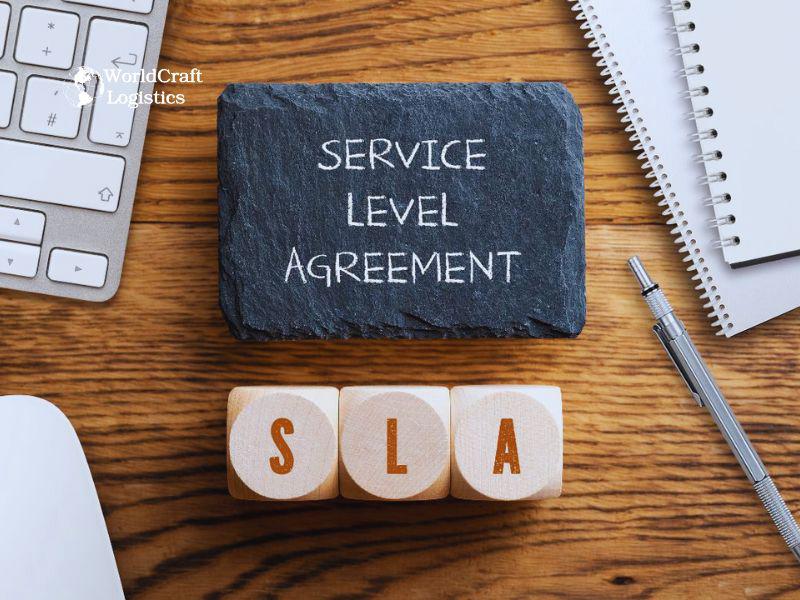
SLAs are commonly used in IT services, customer support, logistics, and various other industries where performance and reliability are critical. They typically include key elements such as uptime guarantees, response times, penalties for non-compliance, and reporting procedures. By defining these parameters, SLAs help businesses minimize risks, improve service quality, and maintain strong professional relationships.
A Service Level Agreement (SLA) is a crucial document that defines the standards, expectations, and responsibilities between a service provider and a client. A well-structured SLA typically includes the following key elements:
Service Scope and Objectives
Defines the specific services covered under the agreement.
Outlines the purpose and goals of the SLA.
Performance Metrics and KPIs
Establishes measurable service standards such as:
Uptime and Availability (e.g., 99.9% server uptime).
Response Time (e.g., customer support response within 24 hours).
Resolution Time (e.g., resolving critical issues within 4 hours).
Ensures service quality and accountability.
Roles and Responsibilities
Clearly defines the duties of both the service provider and the client.
Identifies who is responsible for monitoring and maintaining service levels.
Service Monitoring and Reporting
Specifies how performance metrics will be tracked.
Includes reporting frequency and format (e.g., monthly performance reports).
Issue Resolution and Escalation Procedures
Describes steps to take in case of service failures or disruptions.
Defines escalation levels and response times for unresolved issues.
Penalties and Remedies
Outlines consequences for failing to meet agreed-upon service levels.
Includes potential compensation (e.g., service credits or refunds).
Review and Revision Process
Establishes guidelines for updating the SLA to reflect business or service changes.
Ensures the agreement remains relevant and effective over time.
A well-drafted SLA enhances transparency, builds trust, and ensures both parties are aligned on service expectations.

A Service Level Agreement (SLA) can vary based on the nature of the service and the parties involved. Understanding the different types of SLAs can help businesses choose the right agreement that aligns with their needs and expectations. Here are the three main types of SLAs:
A Customer-Based SLA is tailored to a single customer or client. It outlines specific service expectations, performance metrics, and responsibilities for all the services provided to that particular client.
✅ Best for: Businesses offering customized services to individual clients (e.g., IT support for a corporate client).
🔹 Example: An IT support company providing different response times based on the client’s business hours.
A Service-Based SLA applies a uniform agreement across all customers using the same service. Every client receives the same service-level commitments, regardless of individual contracts.
✅ Best for: Companies offering standardized services (e.g., cloud hosting providers, SaaS companies).
🔹 Example: A web hosting company guaranteeing 99.9% uptime for all customers.
A Multi-Level SLA is a more complex agreement that applies different service levels across multiple business units, customers, or services. It is structured into different layers, ensuring flexibility and customization.
✅ Best for: Large enterprises with multiple service requirements or divisions.
🔹 Example: A multinational company with separate SLAs for its HR, IT, and customer service departments.
To determine the best SLA type, consider:
✔️ The size and nature of your business.
✔️ The level of service customization required.
✔️ The industry standards and regulatory requirements.
Selecting the right SLA ensures clarity, accountability, and a seamless service experience for both providers and clients.
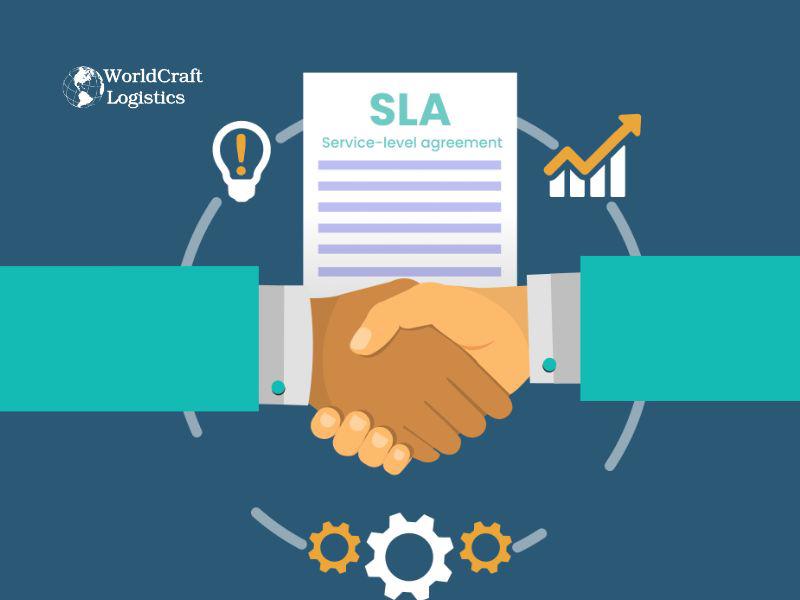
A Service Level Agreement (SLA) plays a crucial role in maintaining strong business relationships and ensuring seamless service delivery. Whether you're a service provider or a client, having a well-defined SLA helps set clear expectations and improve operational efficiency. Here’s why an SLA is essential:
A well-structured SLA ensures that customers receive consistent and high-quality service. By outlining response times, resolution processes, and performance benchmarks, businesses can proactively meet customer needs, leading to greater trust and loyalty.
✅ Example: A cloud service provider guarantees 99.9% uptime, ensuring minimal disruptions for its users.
SLAs eliminate ambiguity by defining specific performance standards and responsibilities. This clarity helps both service providers and customers understand what to expect, reducing confusion and miscommunication.
✅ Example: An IT helpdesk commits to responding to critical issues within one hour, ensuring prompt support.
By documenting key terms such as response times, penalties for non-compliance, and escalation procedures, SLAs help prevent conflicts between service providers and clients. A well-drafted SLA serves as a reference point for resolving disagreements efficiently.
✅ Example: If a logistics company fails to meet the agreed delivery time, the SLA might include compensation clauses.
SLAs hold service providers accountable by setting measurable targets and performance indicators. Regular monitoring of these metrics helps businesses track service quality and make necessary improvements.
✅ Example: A managed IT services provider includes performance reports in its SLA to assess system uptime and response times.
An SLA is a powerful tool that fosters transparency, accountability, and customer satisfaction. By defining clear service commitments, businesses can build stronger relationships, reduce risks, and ensure consistent service quality.
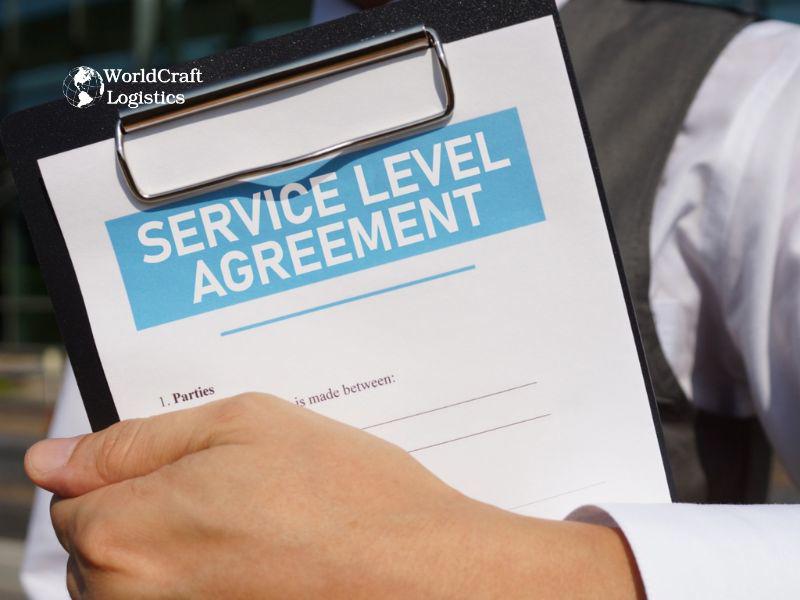
A Service Level Agreement (SLA) is a critical component in various industries, ensuring service providers meet specific performance standards. Below are industry-specific examples of how SLAs are structured and applied to maintain efficiency, reliability, and customer satisfaction.
In IT and cloud-based businesses, SLAs focus on system availability, response times, and service reliability. These agreements help prevent downtime and ensure seamless digital operations.
✅ Key Metrics:
Uptime Guarantees: Providers often commit to 99.9% or 99.99% uptime to minimize service disruptions.
Response Times: IT support teams may guarantee a response within 30 minutes for critical issues and 4 hours for minor incidents.
Data Backup & Recovery: SLAs specify how often data is backed up and how long recovery processes take in case of failure.
Example:
Amazon Web Services (AWS) offers an SLA that guarantees 99.99% uptime for its cloud computing services, with compensation for clients if the service falls below this threshold.
For logistics providers, SLAs focus on delivery accuracy, shipping timelines, and handling efficiency. These agreements are essential for maintaining smooth supply chain operations.
✅ Key Metrics:
On-Time Delivery Rate: Commitment to 95%+ on-time deliveries for shipments.
Order Accuracy: Ensuring 99%+ accuracy in order fulfillment to minimize shipping errors.
Claims and Dispute Resolution: Defined procedures for handling lost or damaged shipments.
Example:
FedEx provides an SLA guaranteeing overnight delivery for priority packages, with a money-back policy if the commitment isn’t met.
Customer service SLAs focus on response and resolution times to ensure prompt assistance and high service quality. These agreements help businesses manage customer expectations and improve satisfaction.
✅ Key Metrics:
First Response Time: Customer inquiries are answered within 30 seconds via chat or within 1 hour via email.
Resolution Time: Critical issues are resolved within 4 hours, while standard requests take up to 24 hours.
Service Availability: 24/7 support availability for premium customers.
Example:
A SaaS company like Zendesk guarantees a 24-hour resolution time for non-critical issues and priority support within 1 hour for enterprise clients.

Different industries apply SLAs to ensure efficiency and accountability in their operations. Whether it's IT, logistics, or customer service, these agreements help maintain high performance and meet client expectations.
Service Level Agreements (SLAs) define the expected performance levels of a service provider. To ensure compliance and maintain high service quality, businesses track various key performance indicators (KPIs). Below are some of the most critical SLA metrics and how they impact service delivery.
Understanding the difference between response and resolution times is crucial in measuring service effectiveness.
✅ Response Time: The time taken to acknowledge a customer’s request or incident.
Example: A customer support SLA may promise a response within 30 minutes for urgent issues.
✅ Resolution Time: The time taken to fully resolve the issue from the moment it is reported.
Example: An IT support SLA may commit to resolving critical server issues within 4 hours.
Response time shows how quickly a provider reacts, while resolution time reflects efficiency in problem-solving.
In industries like IT and cloud computing, uptime and downtime are key SLA indicators for service reliability.
✅ Uptime Percentage: The proportion of time a system or service is operational.
Example: A cloud hosting provider guarantees 99.99% uptime, meaning downtime should not exceed 52 minutes per year.
✅ Downtime Calculation: Downtime is the period when the service is unavailable due to maintenance or failures.
Example: If a website experiences 3 hours of downtime per month, it falls below the 99.9% uptime SLA.
High uptime ensures continuous business operations, while excessive downtime leads to financial losses and customer dissatisfaction.
Customer support and IT service desks rely on First-Call Resolution (FCR) and Ticket Escalation to measure service efficiency.
✅ First-Call Resolution (FCR): The percentage of customer issues resolved during the first interaction, without escalation.
Example: A helpdesk aims for an 80% FCR rate, meaning most queries are solved without follow-ups.
✅ Ticket Escalation Rate: The percentage of service requests that require escalation to higher support levels.
Example: A low ticket escalation rate (below 10%) indicates that frontline agents can handle most inquiries efficiently.
High FCR improves customer satisfaction, while lower escalation rates reduce workload for senior support teams.
Tracking key SLA metrics like response time, uptime, and first-call resolution helps businesses ensure accountability, efficiency, and customer satisfaction. By continuously monitoring these KPIs, companies can improve service performance and strengthen client relationships.

Creating a Service Level Agreement (SLA) requires careful planning to ensure clear service expectations, accountability, and performance tracking. Below are the key steps to crafting a strong and effective SLA:
Before drafting an SLA, outline the scope of the services covered and the main objectives.
✅ Identify what services are included (e.g., IT support, logistics, customer service).
✅ Define the expected outcomes (e.g., faster response times, high uptime, accurate order fulfillment).
✅ Ensure alignment with business goals and customer needs.
Clearly define measurable KPIs to track service performance.
✅ Response Time & Resolution Time: How quickly will issues be acknowledged and resolved?
✅ Uptime & Availability: What percentage of uptime is guaranteed?
✅ Quality & Accuracy: What are the error margins allowed for service delivery?
✅ Escalation & Support Levels: When and how will issues be escalated?
A well-defined SLA clearly assigns responsibilities to both the service provider and the client.
✅ Service Provider Responsibilities: Ensuring agreed performance levels, providing support, handling maintenance.
✅ Client Responsibilities: Providing necessary information, reporting issues correctly, following service usage guidelines.
Define consequences if service expectations are not met.
✅ Service Credits: If a cloud provider fails to meet a 99.9% uptime SLA, customers may receive service credits.
✅ Refund Policies: Some SLAs may include partial refunds if service disruptions occur frequently.
✅ Performance Improvement Plans: If the provider consistently fails, an action plan should be implemented.
SLAs should not be static. A regular review process ensures continued effectiveness.
✅ Set a review period (e.g., quarterly or annually).
✅ Make adjustments based on business changes, customer feedback, or performance issues.
✅ Ensure both parties agree to modifications before implementation.
A well-crafted SLA establishes clear service expectations, minimizes disputes, and ensures accountability. By following these steps, businesses can create an effective SLA that benefits both service providers and customers.
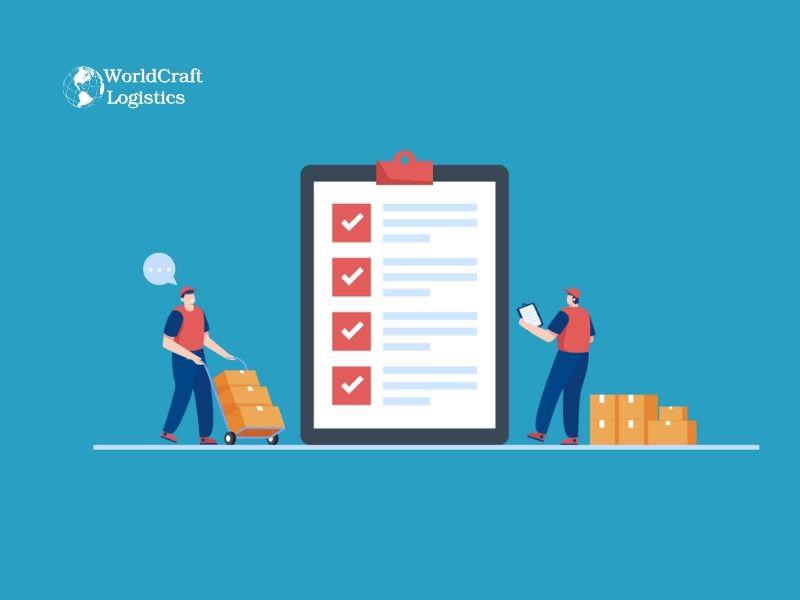
Implementing a Service Level Agreement (SLA) is essential for defining service expectations, but organizations often face several challenges in ensuring compliance and effectiveness. Here are some of the most common obstacles and how to address them:
One of the biggest issues in SLA implementation is unclear definitions of services, expectations, and performance metrics.
Solution: Ensure SLAs use clear, measurable, and specific language. Instead of saying “fast response time,” define it as “responses within 30 minutes during business hours.”
Sometimes, SLAs set overly ambitious targets that service providers struggle to meet.
Solution: Set realistic, achievable, and industry-aligned goals. For example, while a 99.999% uptime SLA (five nines) may be ideal, it might not be feasible for all businesses.
An SLA is useless if there’s no way to track compliance. Many companies fail to monitor service performance effectively.
Solution: Use automated monitoring tools to track response times, uptime, and service quality. Regular performance reports help identify gaps early.
Misalignment between service providers and clients often leads to disputes and dissatisfaction.
Solution: Conduct regular meetings to review SLA performance, discuss challenges, and make necessary adjustments. Ensure both parties understand their roles and responsibilities.
Without a structured escalation plan, service failures can cause frustration and operational disruptions.
Solution: Define who to contact at each escalation level and set resolution timelines. For example, if an issue is unresolved within 24 hours, it escalates to senior management.
SLAs that remain unchanged for years may become irrelevant as business requirements evolve.
Solution: Schedule regular SLA reviews (quarterly or annually) to adjust KPIs, service scopes, and penalties based on business growth and market changes.
SLA implementation can be challenging, but with clear definitions, realistic goals, strong monitoring, and regular reviews, businesses can create SLAs that drive service excellence and long-term success.
At Worldcraft Logistics, delivering high-quality logistics and supply chain solutions depends on well-defined Service Level Agreements (SLAs). A strong SLA ensures transparency, efficiency, and accountability while optimizing performance for clients and partners. Here are our best practices for SLA management and optimization:
Many SLA issues arise from vague or overly broad agreements. At Worldcraft Logistics, we ensure that our SLAs include:
✅ Precise definitions of service commitments (e.g., delivery timelines, order accuracy)
✅ Quantifiable metrics, such as 99.5% on-time delivery rate or less than 1% damage rate
✅ Well-defined scope, covering service coverage, exclusions, and client responsibilities
An SLA should support business growth rather than act as a rigid contract. Worldcraft Logistics ensures that SLAs are:
🔹 Tailored to each client’s needs – Whether it’s express shipping, oversized freight, or customs clearance, our SLAs reflect service expectations.
🔹 Flexible to market demands – We update SLA commitments based on seasonal fluctuations and industry trends.
🔹 Performance-driven – Our SLAs promote cost efficiency, speed, and service reliability.
Tracking SLA compliance manually is inefficient. At Worldcraft Logistics, we use:
📊 Real-time tracking systems – to monitor shipments, identify delays, and optimize routes.
⚡ Automated alerts and dashboards – to detect potential SLA breaches before they impact clients.
📉 Data analytics – to analyze past performance and enhance operational efficiency.
Even the best logistics providers face disruptions. We minimize risks through:
🚀 Preemptive risk management – Identifying bottlenecks and implementing contingency plans.
📞 Tiered escalation procedures – Ensuring that urgent matters are resolved within hours, not days.
📑 Regular SLA performance audits – Reviewing adherence and making necessary adjustments.
A well-managed SLA is built on trust and collaboration. Worldcraft Logistics follows a transparent communication approach:
🗓️ Monthly SLA review meetings – to assess performance and address concerns.
📩 Proactive client updates – on delays, service changes, or new enhancements.
🤝 Customer-centric approach – Our support team is always accessible, ensuring that issues are resolved before they escalate.
SLAs should not be static. Worldcraft Logistics conducts periodic SLA reviews to:
🔄 Adjust service commitments based on evolving supply chain trends.
📈 Introduce new performance benchmarks for continuous improvement.
✅ Ensure legal and compliance updates to align with industry regulations.
Effective SLA management is key to building trust, ensuring reliability, and optimizing logistics operations. By following these best practices, Worldcraft Logistics maintains a high-performance supply chain, helping businesses achieve seamless shipping, reduced costs, and enhanced service efficiency.
SEO
Digital Marketing/SEO Specialist
Simon Mang is an SEO and Digital Marketing expert at Wordcraft Logistics. With many years of experience in the field of digital marketing, he has shaped and built strategies to effectively promote Wordcraft Logistics' online presence. With a deep understanding of the logistics industry, I have shared more than 500 specialized articles on many different topics.

Education
01/05/2025

Education
02/18/2025

Education
01/01/2024
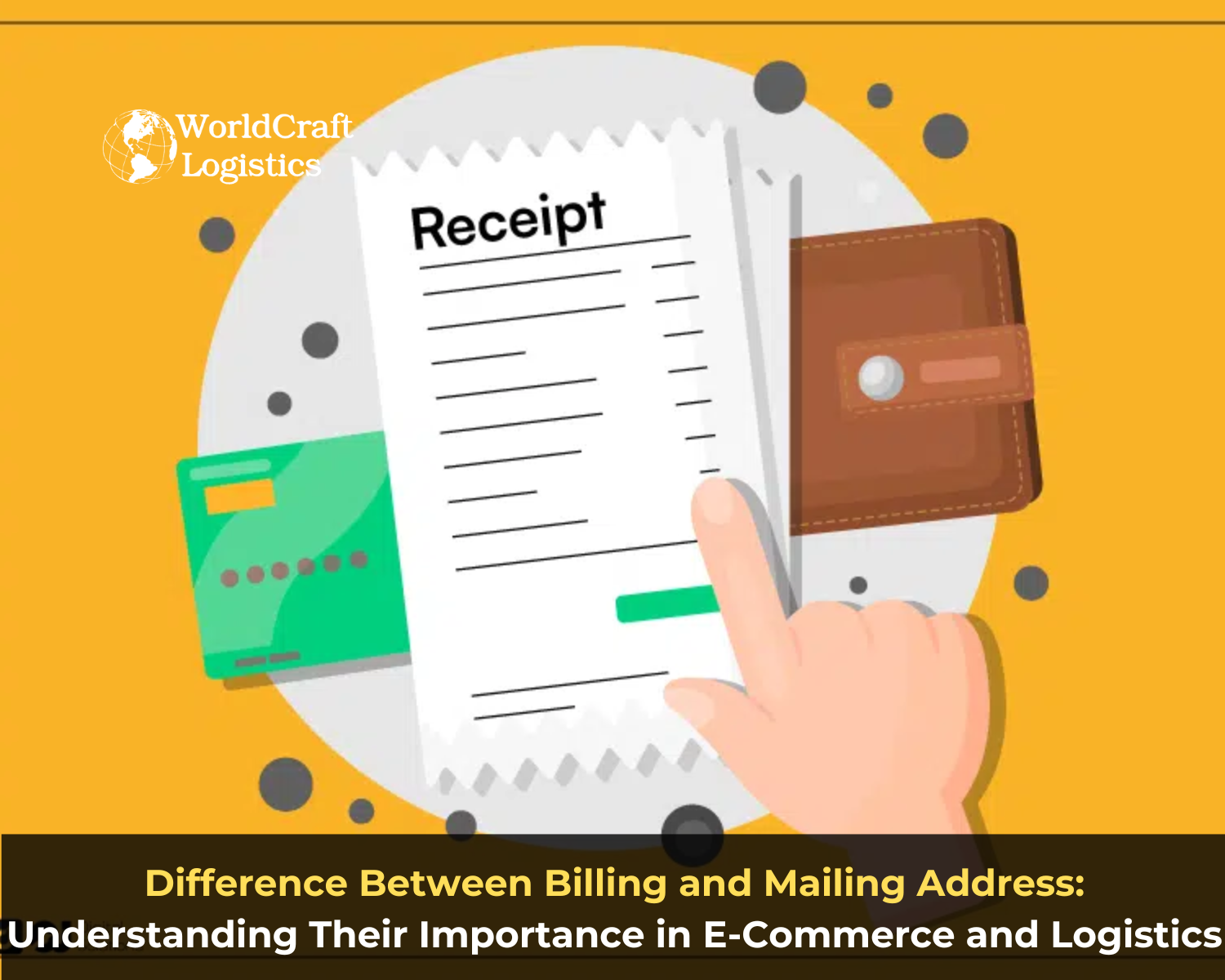
Education
08/28/2024

Education
11/13/2023